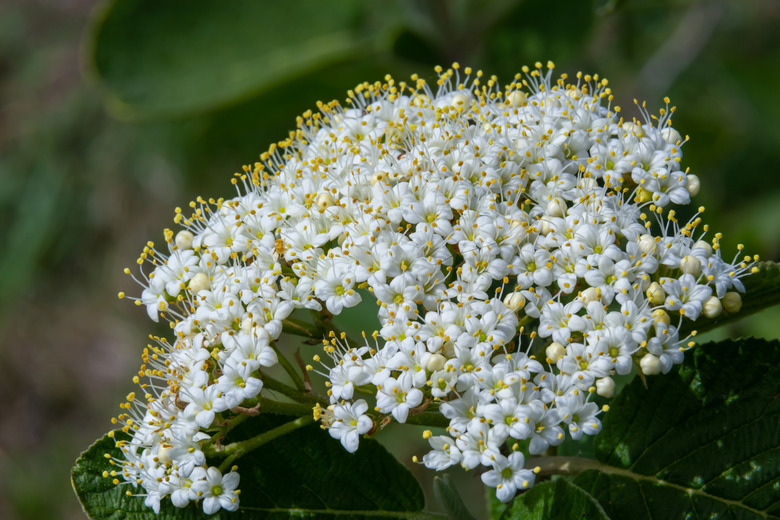Growth Rate For Sweet Viburnum
Sweet viburnum (Viburnum odoratissimum, USDA hardiness zones 7-9) responds to proper care and appropriate conditions with steady, moderate growth. Under optimal growing conditions, sweet viburnum typically grows 24 inches per year until it reaches maturity, according to Cal Poly's Urban Forest Ecosystems Institute. It typically grows fastest in its southernmost growing zones, but cooler climates result in slower annual growth.
Sweet Viburnum Growth Habit
Sweet viburnum naturally grows as a large, multi-stemmed shrub or small tree. When pruned and trained to a single stem, it forms a glossy, spreading canopy. At maturity, sweet viburnum generally reaches 10 to 20 feet tall in the northern ranges of its hardiness zones. Elsewhere, it has been known to exceed that height.
In southern regions, tree-form sweet viburnums may grow up to 30 feet tall and wide. In its natural, multi-stemmed form and planted appropriately, this plant excels as a staggered screen or dense, evergreen, fast growing viburnum hedge. In its northernmost hardiness range, the North Carolina State Extension notes that sweet viburnum may be deciduous, which is a consideration if you're wanting a solid-green privacy screen all year long.
Sweet Viburnum Ornamental Features
As its species and common name suggest, sweet viburnum is known by its scent. A fresh, sweet fragrance emanates from creamy-white flower panicles that cover the plant in late spring. But the leaves — if crushed — give off a distinctively unpleasant odor that positively identifies the plant at hand.
Sweet viburnum's pyramid-shaped flower clusters grow 3 to 6 inches long and 2 1/2 to 5 inches wide. As summer progresses, 1/4-inch-long red fruits take their place and draw wildlife to the garden. The attractive, oval fruits mature to purple-black.
Sweet viburnum leaves grow up to 8 inches long and 4 inches wide. New growth sometimes reflects a pink tinge, particularly on the cultivar Emerald Lustre, notes the Clemson Cooperative Extension.
Growth-Enhancing Sweet Viburnum Culture
Sweet viburnum does well in full sun to partial shade on well-draining soils from sand to clay. It prefers slightly acidic soil pH near 5.5 to 6.5, but it withstands highly alkaline conditions. Low-maintenance and undemanding, sweet viburnum tolerates drought, but regular moisture enhances steady growth. Water deeply when you water, then let soil dry slightly before watering again.
Overly wet soil and poor drainage lead to root rot disease. Before planting, work a 3-inch layer of organic compost into the soil 8 to 12 inches deep. No further fertilizers are needed. Mulch established plants with 2 to 3 inches of organic compost to support healthy growth.
Growing Considerations for Sweet Viburnum
Sweet viburnum performs admirably in difficult urban settings, including median strips and concrete islands, but urban challenges can affect its growth rate. Don't be tempted to manipulate sweet viburnum through unnecessary fertilizers or other measures. Unnatural growth rates lead to weak, problem-prone wood. Natural growth encourages strength and health.
If needed, prune sweet viburnum right after it finishes flowering. To enjoy the fruits, leave the flowering stems intact. Use sharp bypass pruning shears, and sanitize the blades with alcohol before making each cut. Avoid late-season pruning; it sacrifices spring blooms and inhibits hardiness.
